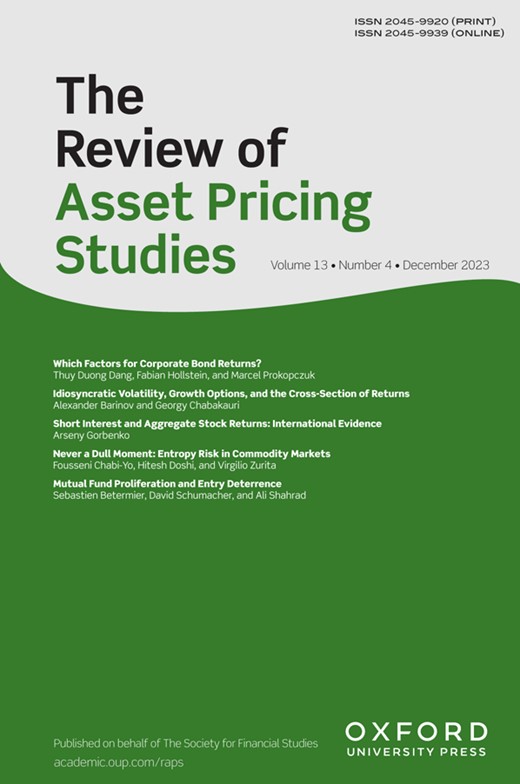CDS势头:缓慢移动的信用评级和跨市场溢出效应
IF 1.5
Q2 BUSINESS, FINANCE
引用次数: 6
摘要
我们表明,CDS市场的内生信息信号,加上主要评级机构对企业信用评级的缓慢更新,造成了CDS市场内部和CDS-股票回报动量等异常现象。利用2003 - 2011年1,247家美国公司的五年期信用违约互换(CDS)合约,三个月形成期和一个月持仓期CDS动量策略每月收益率为52个基点,夏普比率为0.423。信用评级较低(每月83个基点)、CDS深度较高(每月80个基点)和金融危机期间(每月97个基点)的实体表现更好。此外,我们的跨市场测试表明,通过将过去的CDS回报纳入股票动量投资组合形成过程,传统的股票动量策略避免了危机期间的突然损失,并将其业绩每月净提高104个基点。这种联合市场动力策略对于CDS深度高的实体尤其有利可图。重要的是,我们表明,在CDS市场和CDS-股票联合市场中,动量利润存在,因为CDS回报正确地预测了未来信用评级的变化。这一机制完全区分了CDS动量和债券回报动量。本文章由计算机程序翻译,如有差异,请以英文原文为准。
CDS Momentum: Slow-Moving Credit Ratings and Cross-Market Spillovers
We show that endogenous information signaling in the CDS market, together with sluggish updates on corporate credit ratings assigned by major rating agencies, creates anomalies such as return momentum within the CDS market and across CDS-to-stock return momentum. Using 5-year credit default swap (CDS) contracts on 1,247 U.S. firms from 2003 to 2011, a three-month formation and one-month holding period CDS momentum strategy yields 52 bps per month with a Sharpe ratio of 0.423. The performance is better for entities with lower credit ratings (83 bps per month), high CDS depth (80 bps per month), and during the financial crisis (97 bps per month). Furthermore, our cross-market tests show that by incorporating past CDS returns into the stock momentum portfolio formation process, traditional stock momentum strategies avoid abrupt losses during the crisis period and improve their performance by a net of 104 bps per month. This joint-market momentum strategy is particularly profitable for entities with high CDS depth. Importantly, we show that both within the CDS market and CDS-to-stock joint-market, momentum profits exist because CDS returns correctly anticipate future credit rating changes. This mechanism completely differentiates CDS momentum from bond return momentum.
求助全文
通过发布文献求助,成功后即可免费获取论文全文。
去求助
来源期刊

Review of Asset Pricing Studies
BUSINESS, FINANCE-
CiteScore
19.80
自引率
0.80%
发文量
17
期刊介绍:
The Review of Asset Pricing Studies (RAPS) is a journal that aims to publish high-quality research in asset pricing. It evaluates papers based on their original contribution to the understanding of asset pricing. The topics covered in RAPS include theoretical and empirical models of asset prices and returns, empirical methodology, macro-finance, financial institutions and asset prices, information and liquidity in asset markets, behavioral investment studies, asset market structure and microstructure, risk analysis, hedge funds, mutual funds, alternative investments, and other related topics.
Manuscripts submitted to RAPS must be exclusive to the journal and should not have been previously published. Starting in 2020, RAPS will publish three issues per year, owing to an increasing number of high-quality submissions. The journal is indexed in EconLit, Emerging Sources Citation IndexTM, RePEc (Research Papers in Economics), and Scopus.
 求助内容:
求助内容: 应助结果提醒方式:
应助结果提醒方式:


